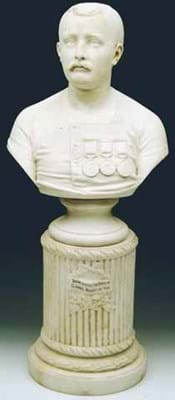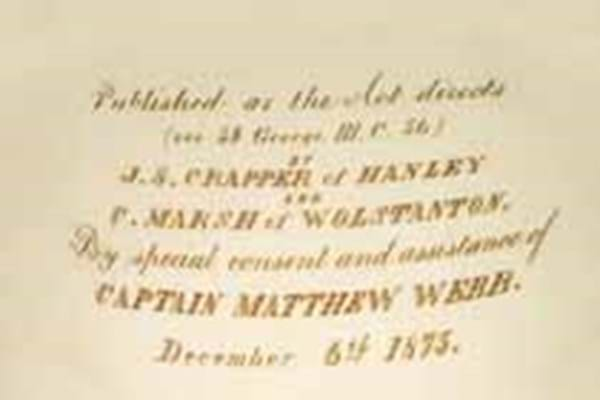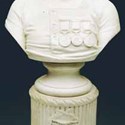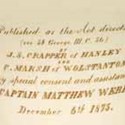Webb, born in the Shropshire mining village of Dawley on January 19, 1848, learned to swim at the age of seven and nurtured a remarkable talent in the strong currents of the River Severn at Coalbrookdale. However, it was not until 1873, upon reading an account of the failed Channel attempt by racing swimmer J.B. Johnson, that swimming became his career path.
He quit his job as captain of the merchant steamship Emerald and, lodging in London, he began to train - first at Lambeth Baths and then in the Thames and the English Channel.
On August 24 1875, an abortive attempt behind him, Webb dived into the water near Dover's Admiralty Pier. Backed by a flotilla of three boats and smeared in porpoise oil, he set off into the ebb tide with a steady breaststroke. Eight hours into the swim he was stung by a jellyfish, a brutal dawn tide near Cap Gris Nez checked his attempts to reach shore for five hours, but remarkable stamina, sheer bloody mindedness and the occasional slug of brandy saw him to Calais.
Rule Britannia
The passengers and crew of the mailship The Maid of Kent had witnessed his final efforts. Webb recalled in his diary: "Never shall I forget when the men in the mailboat struck up the tune of Rule Britannia, which they sang, or rather shouted, in a hoarse roar. I felt a gulping sensation in my throat as the old tune, which I had heard in all parts of the world, once more struck my ears under circumstances so extraordinary."
He returned in triumph - and to a good living. A testimonial fund set up by the London Stock Exchange raised £2424 and Webb was to earn further sums from more feats of derring-do. In the so-called World Championship Race he beat United States champion Paul Boyton in a race off Nantasket Beach, Massachusetts and pocketed £1000 for a circus-style stunt that involved floating in a tank of water at Boston Horticultural Show for 128 hours.
Commercial ventures were also launched in his name. He wrote a book, The Art of Swimming, helped sell safety matches and gave his face to the Staffordshire potters.
A parian bust of Webb was seen at Mallams of Oxford on September 29. As detailed to its verso, it was made By special consent and assistance of Captain Matthew Webb, December 6 1875 and Published…by J.S. Crapper of Hanley and C. Marsh of Wolstanton. The factory they approached to make the model is unknown but it is unlikely that more than a handful were made.
The moustachioed Webb wears three life-saving medals (including the Stanhope Medal he received in 1874 following his efforts to save a man overboard) and, standing 2ft 1in (63cm) high, this example came with a fluted column with cartouche inscribed Swam across the English Channel August 24 1875.
The latter was extremely rare. Cheltenham-based parian specialists Clive and Lynne Jackson had only handled one Webb bust in the previous 25 years and that example did not include its original column. Accordingly, they were happy to buy it at £720 (plus 15 per cent premium) and have subsequently placed it with a collector.
And Webb? In 1883 he accepted a challenge and a £12,000 purse to swim the Niagara rapids from Canada to America. Thousands of onlookers were there to see him enter the water wearing the same costume he had used eight years earlier when he stepped ashore in Calais, but this time the attempt was to end in tragedy. Webb's body was found four days later and is buried at Oakwood Cemetery, Niagara Falls.
Webb feat remembered in porcelain
AT 10.41 on the morning of August 25, 1875, to the sounds of Rule Britannia, Captain Matthew Webb emerged from the cold and choppy waters of the Channel. It had taken him 21 hours and 41 minutes. He had covered close to 40 miles. But he had become the first man to swim from English to French soil.








